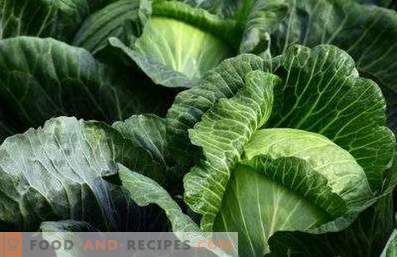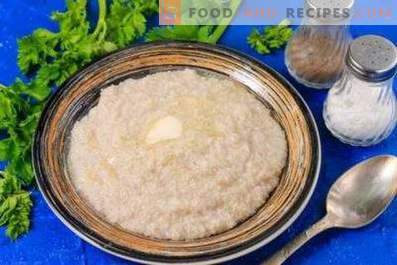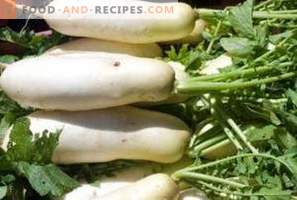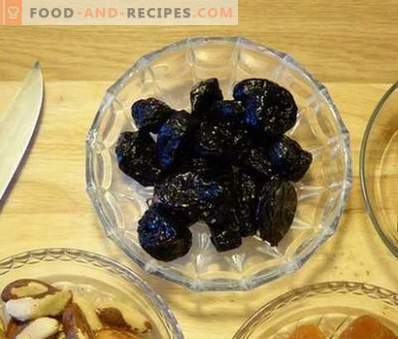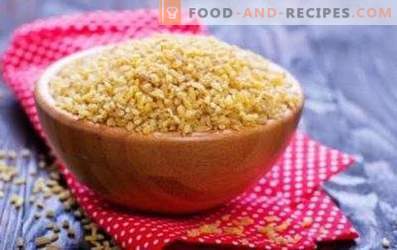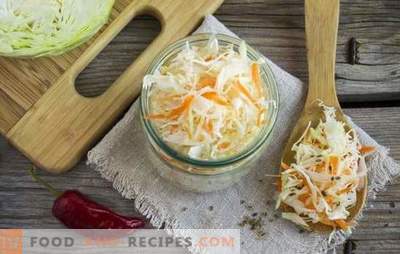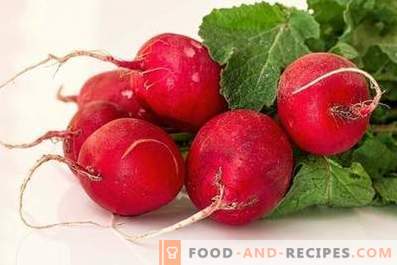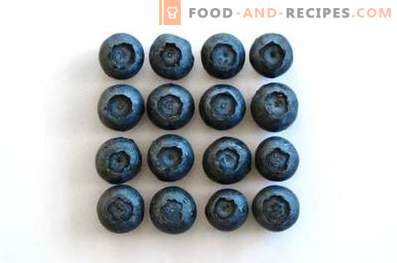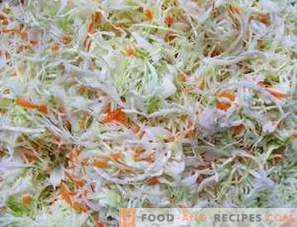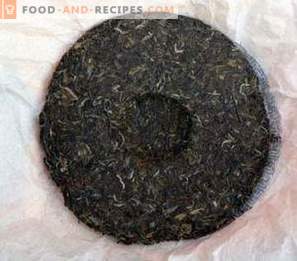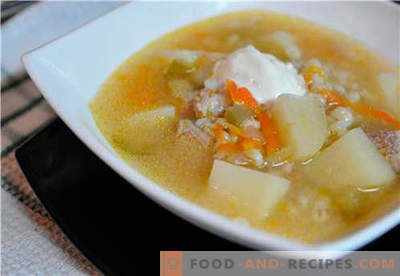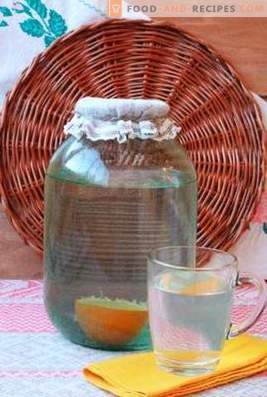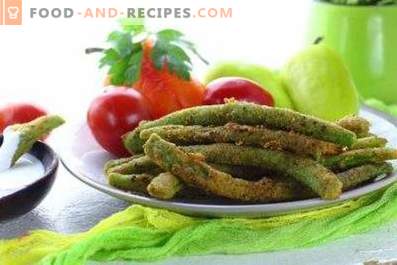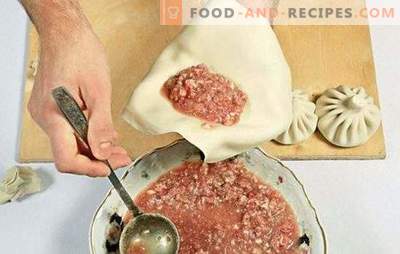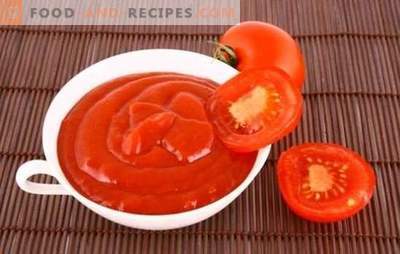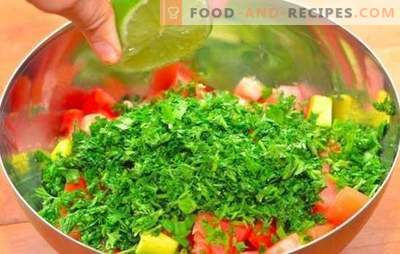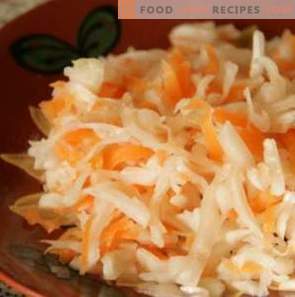
Pickled cabbage is a product obtained by lactic acid fermentation of chopped or chopped cabbage leaves. The role of preservatives in this case is played by lactic acid and salt. High-sulfur mustard oils give the product a specific flavor and aroma, turning it into a wholesome and tasty snack.
Homeland sauerkraut - China. There are archaeological data confirming that this dish began to be prepared on the territory of the Middle Kingdom almost 3 thousand years ago. Later, simple cabbage fermentation technology was mastered in Korea and Central Europe. In Russia, this dish became widespread only by the middle of the XVI century.
Sauerkraut is an affordable and healthy product. It is consumed as a snack or side dish, used to prepare salads, first courses or toppings for baking. In folk medicine, with the help of fermented cabbage and the brine released from it, a wide variety of disorders in the body's work are corrected.
Traditional cabbage souring recipe
Composition:
- white cabbage - 5 kg;
- sour apples - 4-5 pieces;
- carrots - 350-400 g;
- table salt - 100 g;
- cranberries and (or) lingonberries - 70-80 g.
Cooking:
- Cabbage is cut into long noodles, the carrots are cut into thin strips, and apples are cut into large slices.
- The resulting mass is sprinkled with salt, mixed with berries and poured into a wooden tub scorched with boiling water.
- The mixture is tightly tamped down and pressed down with oppression.
- Cabbage fermentation lasts 5 days at a temperature of about 20 ° C. During this period, the evolving foam is regularly removed and the rammed mixture is pierced daily with a sharp wooden stick.
- On days 5-6, the tub with sauerkraut is transferred to a cool place.
- Dish comes to readiness after 1, 5-2 weeks.
Rules for the selection and storage of sauerkraut
Sauerkraut can be purchased in the store or on the market. When choosing this product, it is important to consider the following nuances:
- Before buying sauerkraut in the store, you should carefully read the label on the package. The composition of the product should not be acetic essences, lemon juice or citric acid.
- High-quality sauerkraut has a pronounced sourish-salty taste, white color (sometimes with a pinkish-golden sheen) and a pleasant aroma of pickles. It is better to refrain from buying products that have a musty or other unpleasant smell, gray color or dark spots.
- Fermented cabbage should be thick and crispy. If the product does not crunch, it means that the technology of its preparation was broken.
- Most vitamins are stored in coarsely chopped cabbage leaves.
- Pickle should have a slightly mucous consistency.
It is necessary to store cabbage in the dark at a temperature of about 0 ° C: the product begins to ferment vigorously in the warmth and freezes in the cold and loses its nutritional properties. For storage it is better to use wooden, ceramic or glass containers.
Nutritional value of the product
100 g of sauerkraut contains the following nutrients:
- proteins - 1, 511 g;
- fats - 0, 092 g;
- carbohydrates - 5, 179 g;
- dietary fiber - 3, 891 g;
- water - 87, 414 g;
- ash - 0, 816 g.
Digestible carbohydrates in the composition of 100 g of the product - sugar (4, 998 g), starch and dextrins (0, 181 g).
Vitamins in sauerkraut
In sauerkraut contains a whole complex of vitamins. When eaten 100 g of this product in the gastrointestinal tract are:
- retinol equivalent (A) - 598, 744 mcg;
- thiamine (B1) - 0, 027 mg;
- Riboflavin (B2) - 0, 038 mg;
- pantothenate (B5) - 0, 179 mg;
- pyridoxine (B6) - 0, 074 mg;
- folates (B9) - 8, 816 mkg;
- ascorbic acid (C) - 38, 064 mg;
- alpha-tocopherol, tocopherol equivalent (E) - 0, 166 mg;
- nicotinic acid (PP) - 0, 966 mg.
Sauerkraut also contains biotin - vitamin B7 or H. The concentration of this compound is 0, 094 μg per 100 g of product.
Calories
The energy value of 100 g of sauerkraut - 26, 813 kcal. In a teaspoon of this snack contains 2, 741 kcal, in a tablespoon - 7, 819 kcal, in a glass - 41, 147 kcal.
Useful items in sauerkraut
Trace elements in 100 g sauerkraut:
- zinc - 0, 376 mg;
- iodine - 2, 805 mkg;
- aluminum - 492, 819 mkg;
- chromium - 4, 572 mcg;
- manganese - 0, 164 mg;
- rubidium - 5, 544 mkg;
- molybdenum - 12, 063 mcg;
- cobalt - 2, 966 mcg;
- boron - 197, 806 mcg;
- lithium - 0, 377 mkg;
- nickel - 14, 083 μg;
- fluorine - 12, 173 mkg;
- vanadium - 6, 371 mkg;
- copper - 81, 293 mkg;
- iron - 0, 794 mg.
Macroelements in a 100 g serving portion of a dish:
- sodium - 21, 793 mg;
- potassium - 283, 361 mg;
- chlorine - 1243, 578 mg;
- sulfur - 34, 579 mg;
- calcium - 49, 721 mg;
- phosphorus - 29, 732 mg;
- magnesium - 16, 244 mg.
Useful properties of sauerkraut
- Sauerkraut is a dietary product with low energy value. People seeking to lose weight can diversify their diet with this snack, without fear of the consequences.
- Pickle, released during the souring of cabbage, has laxative properties. In order to cope with prolonged constipation, it is enough to drink half a glass of this tool before breakfast, lunch and dinner.
- Pickled cabbage is an available source of ascorbic acid and other vitamins. With regular inclusion in the diet of this dish decreases the likelihood of developing colds, hypovitaminosis and beriberi, increases the overall tone of the body and its ability to resist infections.
- Sauerkraut is a real storehouse of antioxidant compounds that neutralize the negative effects of free radicals, slow down the aging of the body and reduce the risk of developing malignant tumor neoplasms.
- The brine released during the lactic fermentation of cabbage leaves helps women cope with toxemia during the gestation period. In order to get rid of nausea, it is enough to drink 3 tablespoons of this remedy every morning.
- Cabbage, fermented without sweeteners, contains a complex of substances that reduce the concentration of sugar in the blood.
- With regular consumption of fermented cabbage leaves, the composition of the intestinal microflora is normalized, the secretory activity of the gastrointestinal tract increases, and the risk of developing disorders in the digestive system is reduced.
- Sauerkraut is rich in compounds that help increase bone density and prevent the development of osteoporosis.
- Substances entering the body upon consumption of this product contribute to the acceleration of lipid, carbohydrate and protein metabolism.
- Vitamin A and other compounds present in fermented cabbage leaves help to improve eyesight and protect the visual apparatus under increased eye strain.
- Women who regularly include sauerkraut in their diets are more likely to tolerate manifestations of menopausal syndrome.
- Fermented cabbage leaves are an effective detoxification agent. Eating 150 g of this product per day can accelerate the elimination of toxins, poisons, salts of heavy metals and other harmful substances from the body.
- The B vitamins with which sauerkraut is rich strengthen the nervous system. People whose diet is always present in this dish rarely suffer from neurosis, depression, insomnia, and sudden mood swings.
- Iron and other nutrients that are contained in fermented cabbage leaves improve blood formation. Therefore, this dish is recommended for people suffering from anemia.
- Substances present in sauerkraut, increase potency, improve the composition of the ejaculate and reduce the risk of developing disorders in the urinary system in men.
- In traditional medicine, sauerkraut is used to combat hemorrhoids. The product is ground in a mortar, the resulting gruel is wrapped in gauze and applied to the inflamed knot for 2-3 hours.
- The substances present in sauerkraut help to remove excess cholesterol from the body, give elasticity and strength to the walls of capillaries, veins and arteries, strengthen the heart muscle, regulate the frequency of the heartbeat. Due to this, people who daily include this dish in their menu, decrease the risk of arrhythmia, atherosclerosis and other cardiovascular diseases.
- Research findings indicate that sauerkraut has antihistamine properties. People who consume this product daily have a reduced risk of developing allergic reactions and attacks of bronchial asthma.
- Juice, released during the fermentation of cabbage leaves, has analgesic, antiseptic and anti-inflammatory properties. Traditional healers advise to rinse the oral cavity with sore throat, laryngitis, pharyngitis, gingivitis and stomatitis with this agent.
- In case of congestion in the gallbladder, it is useful to drink the cabbage pickle, half diluted with tomato juice. The tool must be taken in a third cup 25 minutes before breakfast, lunch or dinner.
- In sauerkraut there is a complex of compounds that improve the condition of nails and hair, give them a healthy shine and accelerate their growth.
- In traditional medicine, fermented cabbage pickle is used to treat superficial burns. A sterile cloth impregnated with this agent is applied to the affected area. Gadget change every 20 minutes.
- Juice, which is released when squeezing cabbage leaves, is an effective remedy for a hangover.
Cosmetic properties of sauerkraut
- A mask that cleanses and whitens the skin and smoothes fine lines is prepared from the fermented cabbage leaves. The product is wrung out, crushed in a blender and applied in a thin layer on problem areas. After 40 minutes, the cabbage mass is washed off, and any moisturizer is applied to the treated skin.
- Pickled cabbage pickle is an effective remedy for acne. Liquid is impregnated with sterile gauze and applied to problem areas for 10 minutes. The procedure is repeated daily.
- A mask is prepared from sauerkraut that regulates the functioning of the sebaceous glands, which narrows the enlarged pores and blocks the spread of inflammatory processes on too oily skin. The product (4 tbsp. Spoons) is ground in a blender, combined with whipped egg white and 4 tsp. Of potato starch. The mass is thoroughly mixed and distributed over the skin. After 25 minutes, the composition is washed with warm water.
- Sauerkraut can be the basis for making a mask that moisturizes dry and sensitive skin. The product (3 tbsp. Spoons) is ground in puree, combined with egg yolk and olive oil (1, 5 tsp.). The resulting mass is whipped and spread over the problem skin. After 35 minutes, the composition is washed with cool water.
- Juice released during the souring of cabbage leaves helps strengthen the hair follicles and slow down too intense hair loss. For the preparation of a therapeutic agent, 1/2 cup of brine is combined with 1, 5 teaspoons of honey, stirred and heated to 40 ° C. The resulting composition is rubbed into the scalp in a circular motion and leave for 40 minutes. The procedure is carried out every 8-9 days.
Contraindications and harm to sauerkraut
- Abuse of sauerkraut can provoke abdominal distention, active gas formation, diarrhea.
- Substances present in fermented cabbage leaves slow down iodine absorption. People at risk for thyroid disease should consult a physician before including this snack on the menu.
- Sauerkraut - a dish with a high salt content. Therefore, people suffering from hypertension, gout and edema should limit the consumption of this product.
- Fermented cabbage is contraindicated in case of excess acidity of gastric juice, severe diseases of the kidneys and pancreas, gastritis, in the presence of calculus in the gallbladder.
- Nutritionists do not recommend including this snack in the diet of children under 5 years of age.
